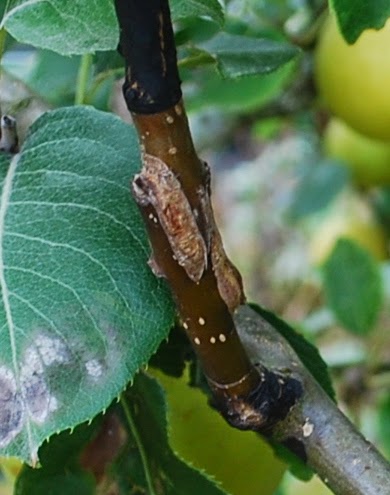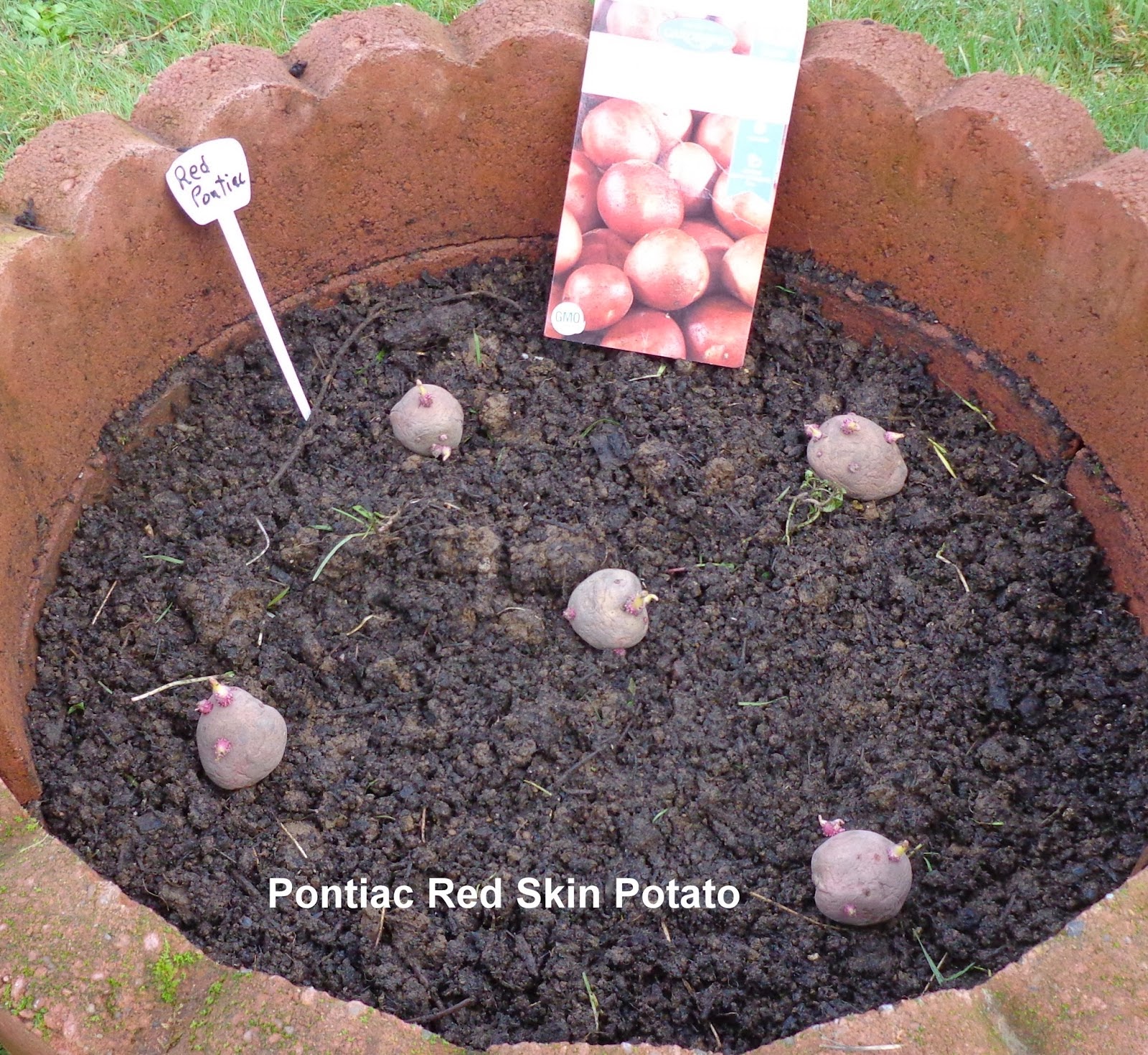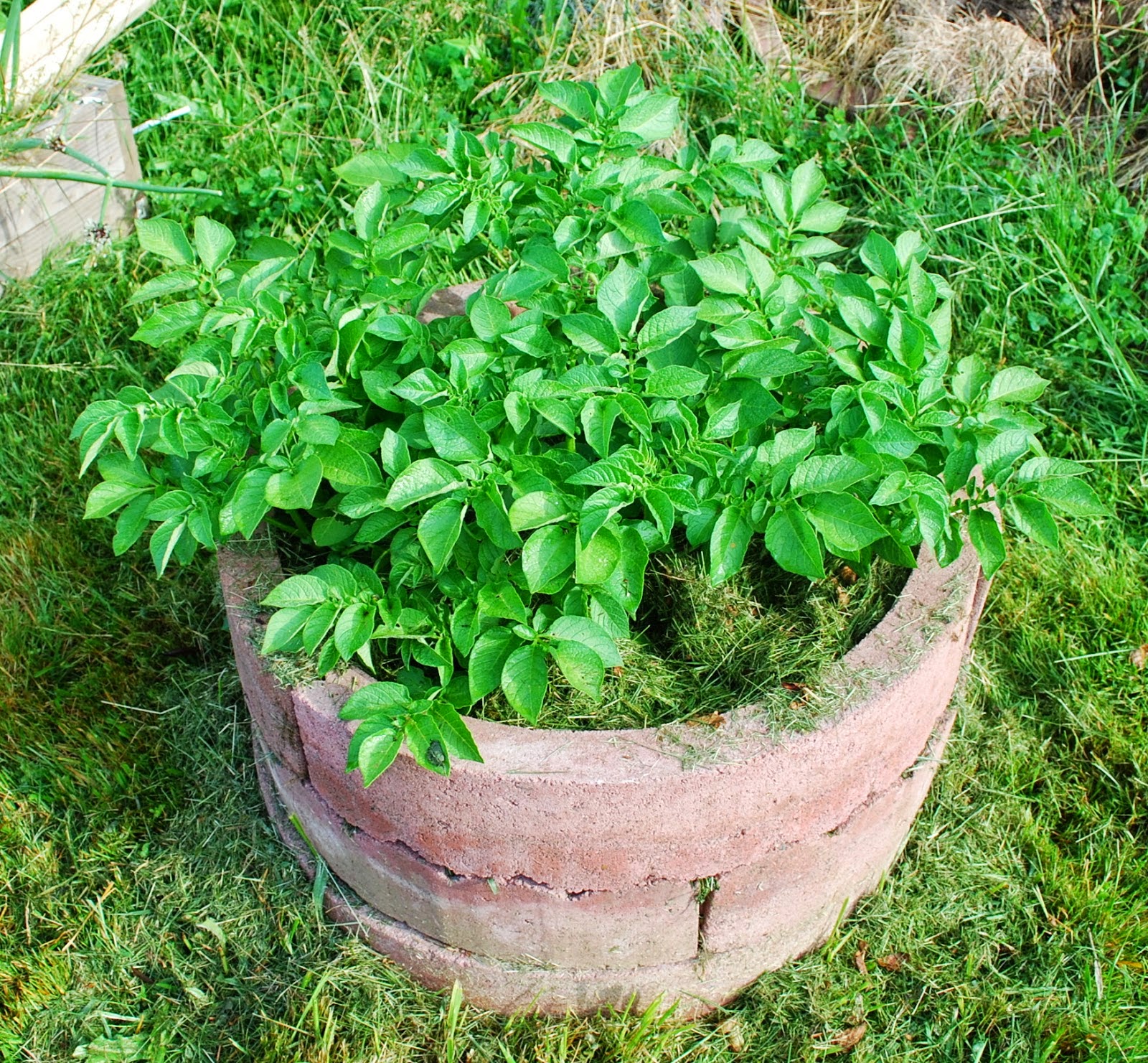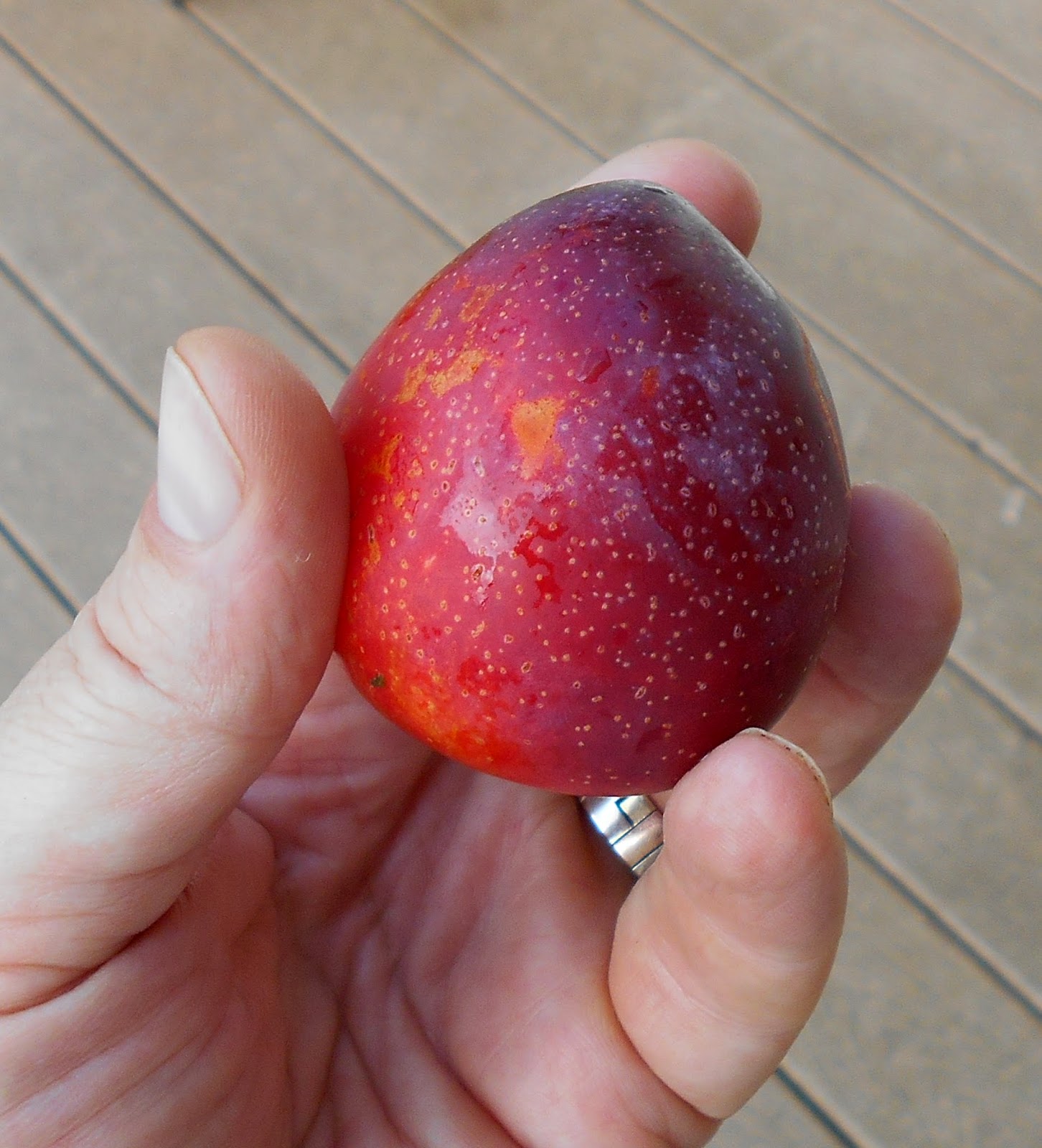 |
| Sweet Cherry Bud Graft. Grafted mid-July 2014. 9.1.14 |
 |
| Lilac Bud Grafts. Grafted June 2014. 8.31.14 |
 |
| Hollywood Plum Bud Graft. Grafted late May 2014. 8.31.14 |
 |
| Cerasifolia Plum graft. Grafted late May 2014. 8.31.14 |
This is a follow up on a few of the grafts I've done. The lilac bud grafts all appear to have taken. The buds are plump and green and look similar to the "native" buds on the stock. They have a good start for winter.
Most of the earlier bud grafts, from late May, healed and merged with the stock, and did not grow. That is pretty much as I expected. They look ready for winter. For late winter pruning, the plan is to cut the stock above the buds, so that there is no auxin - inhibition and they take off and grow next Spring.
Two of the May plum bud grafts took off and grew like crazy. The cerasifolia graft shows up nicely against the green foliage of the stock tree. Hollywood would do the same. i wonder if these rapidly grown grafts will bloom next year. If they do, that will be awesome.
 |
| Cerasifolia Plum Bud Graft. Grafted late May 2014. 8.31.14 |
 |
| Sour Cherry Bud Graft. Grafted July 2014. 8.31.14 |
 |
| Sweet Cherry Bud Grafts. Grafted July 2014. 8.31.14 |
The sour cherry and sweet cherry bud grafts mostly appear to have taken. Possibly, all of them. Most look about the same as the native buds on the stock trees. The sides of the T-slice tend to curl back as the bud and tree callous and merge. The top of the T seems to callous and merge without peeling back.
Last year's cleft graft on the Asian Pears, have almost completely healed over. I was interested to see if the expose wood, would be a problem. It looks like there is not problem. At this rate, next year they will be completely filled in, leaving a visible graft but no open wood.
This year's Whip/Tongue grafts on the Asian pears, both the Asian pears I grafted and the European pears, have all healed over completely. Growth surprised me - most had 2 to 3 feet of growth. That is faster than the cleft grafts, in general. Not a good test, but with no exposed wood, and instant, full cambium connection, whip/tongue in theory could give a faster start.
This is only a few of the many grafts I did this year. All plum grafts took, all pear and apple grafts took. Only one of the whip/tongue grafts on lilacs took. It looks like all of the bud grafts on lilac took, so maybe that's the best method for them.
Grafting is amazing. I can't believe it works. It should - it's been done for thousands of years. But it's still amazing.
 |
| Asian Pear Cleft Graft. Grafted March 2013. 8.31.14 |
 |
| Pear Whip and Tongue Graft. Grafted March 2014. 8.31.14 |
 |
| Another Lilac bud graft, about 3 weeks. 9.1.14 |
























